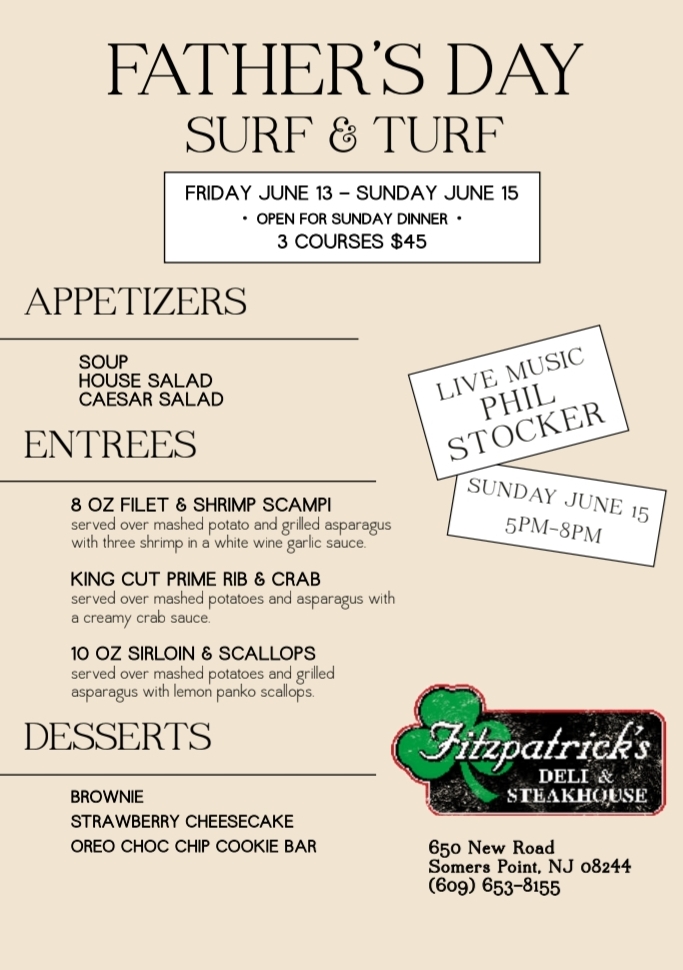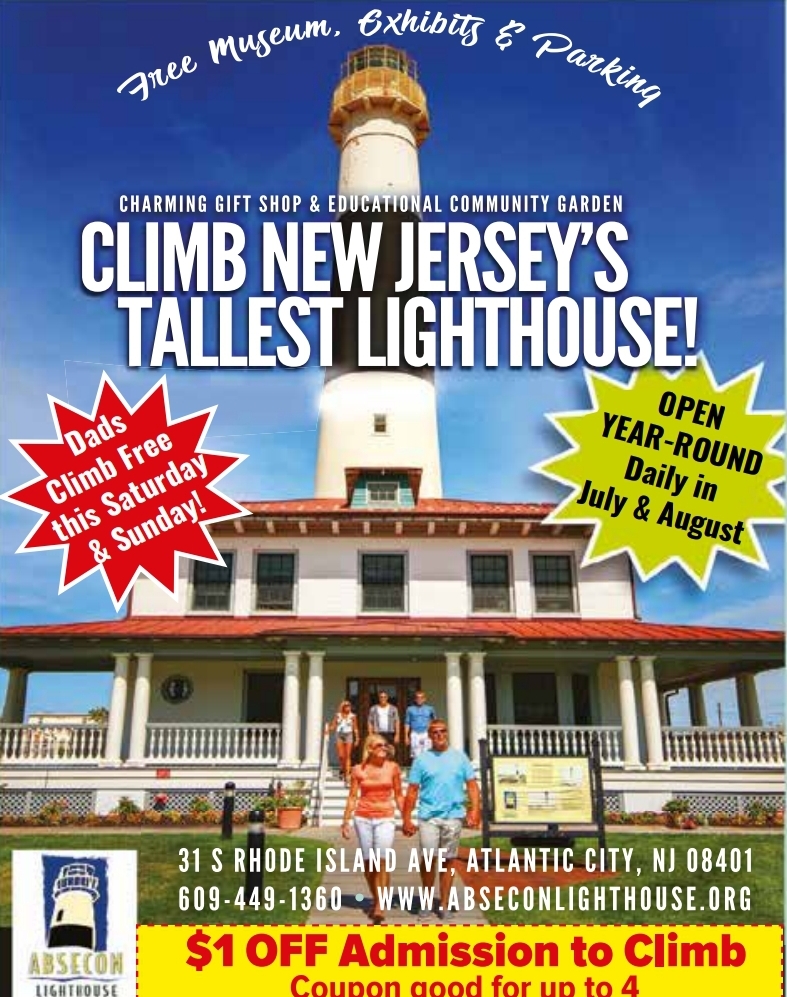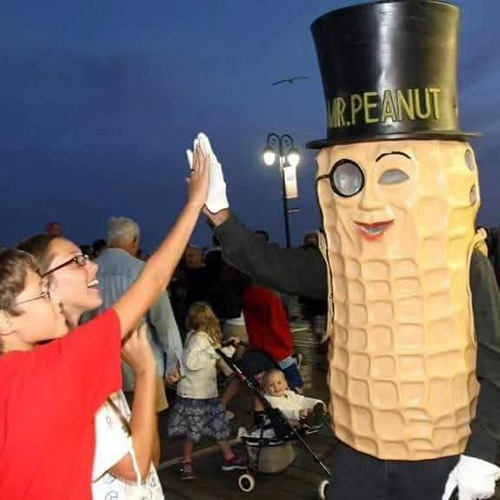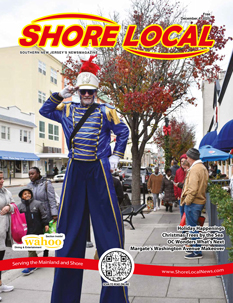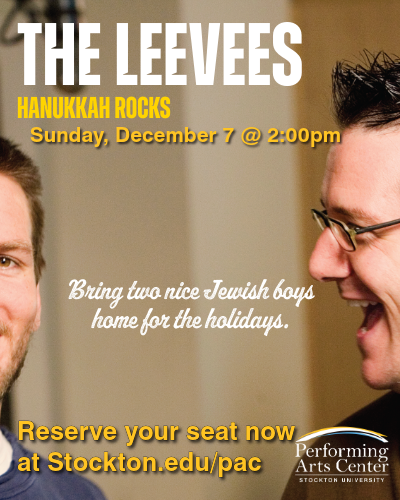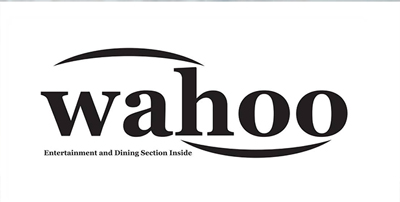Some seasons back, on the television quiz show, “Family Feud,” the following question was asked: “What food is most associated with Atlantic City?” The top answer was salt water taffy. I can’t recall exactly what the other answers were, but I’m pretty certain that Taylor Pork Roll and Planters Peanuts were among them.
Taylor Pork Roll
It wasn’t invented at the Jersey Shore, but in any list of “favorite foods” on the Boardwalk, Taylor Pork Roll is almost always mentioned.
Taylor Pork Roll was invented about 90 miles away from Atlantic City in Trenton, NJ to be exact – by John Taylor, and was originally labeled “Taylor’s Prepared Ham.” That name lasted until 1906. Depending upon where pork roll lovers live in the state of New Jersey, it’s still called Taylor Ham. But at the shore it’s Taylor Pork Roll.
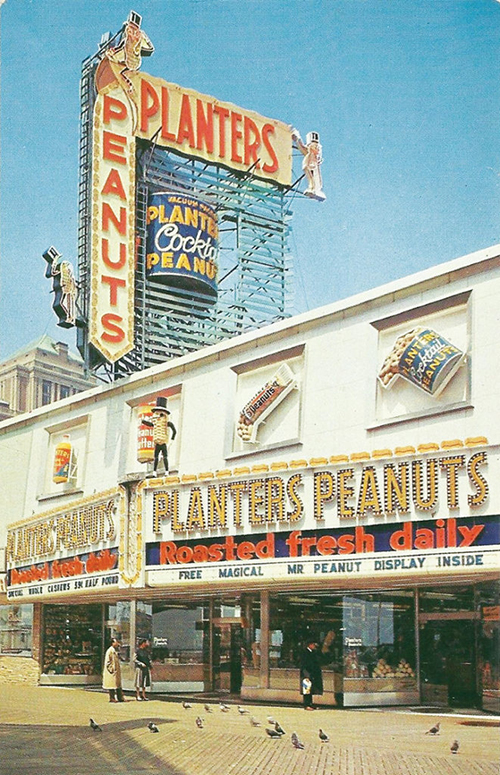
By 1894, sales of the product totaled over $200,000. For the company, called Taylor Incorporated, trading as Taylor Provision Company, there were some legal issues regarding the “pork roll” name over the years. Unfortunately, the original “Taylor Prepared Ham” name didn’t meet the Pure Food and Drug Act’s definition of “ham,” hence the name change to Taylor Pork Roll.
There have been pork roll competitors in the past, including scrapple, but none was as famous as Taylor. Like scrapple, no one knows exactly what combination of ingredients makes up the product. Like scrapple, manufacturers have kept the recipe secret, though we do know that it’s a combination of spices, sugar, salt, pork, lactic acid, sodium nitrite and nitrate.
Is it good for you? No. Is it delicious? Yep.
The reasons for the vast popularity of Taylor Pork Roll as a Boardwalk delicacy remain hard to pin down, though the simplicity of cooking it easily, and quickly, has to be a factor, and the aroma of it cooking outdoors is hard to resist.
While Taylor Pork Roll is widely available at supermarkets everywhere, the Taylor people surmised that there was just something about enjoying it on the Boardwalk, which led to an expansion into direct retailing.
At one point in the 1950s there were eight Taylor Pork Roll sandwich shops on the shore – two in Cape May, one each in Wildwood, Seaside and Asbury Park, and three in Atlantic City. The last Atlantic City store closed around 1978, and the final one in Cape May closed up in the early 1980s only because the franchise owner retired.
One Facebook user, posting as “Scott,” from Morrisville, Pa., is one of the many on social media who have fond memories of enjoying pork roll on the Boardwalk. He recalled, “When I was a child, no vacation to Atlantic City was complete without eating a Taylor Pork Roll sandwich on the Boardwalk. I’ve been buying it all my life, and no matter how good it is, I can never duplicate the taste that it had there. I’ve fried, broiled and microwaved it. Oh, for another sandwich by the sea!”
And that says it all.
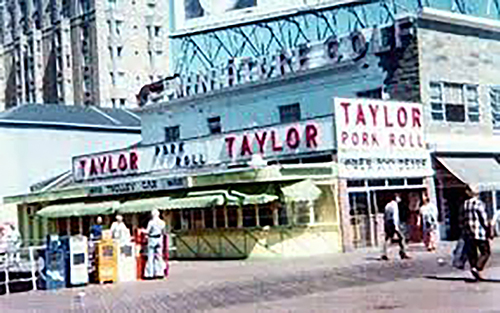
Mr. Peanut and the Planters Peanut Store
As a youngster I was crazy for Atlantic City’s Steeplechase Pier and the adjoining Steel Pier. While walking on the Boardwalk toward Virginia Avenue, I knew I was getting close as soon as I could smell the aroma of peanuts roasting.
As I got closer, I could see the famous Mr. Peanut mascot holding forth in front of the Planters Peanut store opposite Steeplechase and the Pier. What I didn’t know, until I read Cindy Fertsch’s story in Shore Local a year or so ago, was that the Mr. Peanut character had been parading in front of the store since the early 1930s, and did so until the store closed in 1978.
Planters was founded in 1896 in Wilkes-Barre, Pa., by an Italian immigrant named Amedeo Obici. He operated a fruit stand, but it wasn’t until he invested in a peanut roaster that business really began to take off. Several years later, he partnered with fellow immigrant Mario Peruzzi, who invented a streamlined, relatively trouble-free method of roasting peanuts.
The peanuts proved to be so popular that the little business soon hired six employees to operate two roasters. In 1908, the operation incorporated and became formally known as the Planters Nut and Chocolate Company.
By the 1930s, the company expanded into retailing, with the main outlets being in Times Square in New York City, and on the Atlantic City Boardwalk.
By the latter 1940s, Planters had about 70 stores across the country, and four manufacturing plants. Though Standard Brands acquired Planters in 1961, and began to concentrate on distribution to supermarkets, the stores, especially the Boardwalk outlets, continued to thrive.
There is some dispute about the invention of the Mr. Peanut mascot. Supposedly, Planters ran a design contest around 1916 in search of a piece of art to define the product and the company.
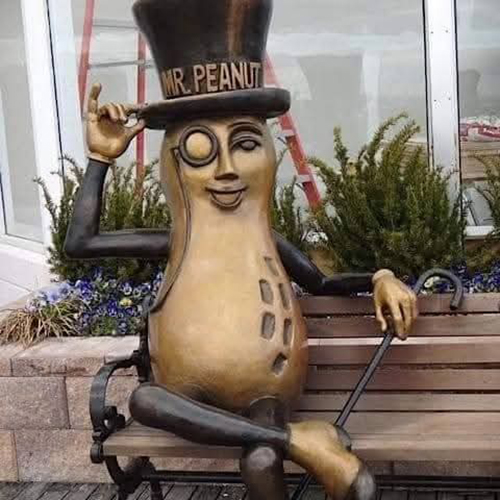
A youngster named Antonio Gentile won the contest and was awarded $5 for his efforts. Other artists later added the famed monocle, tophat, and cane along the way. Mr. Peanut was born. No one could have predicted how popular the mascot would become.
According to Advertising Age magazine, “By the mid-1930s, the raffish figure had come to symbolize the entire peanut industry. Mr. Peanut has appeared on almost every Planters package and advertisement, and is one of the best-known icons in advertising history. He has appeared in many TV commercials as an animated cartoon character.”
Those of a certain age who have visited Atlantic City through the years will never forget the Mr. Peanut character, and the store itself. Writing on the “Atlantic City Memory Lane” Facebook page, Dave Wright remembered:
“We made pilgrimages to the Atlantic City Boardwalk for most of the 1960s, and I’ll never forget the Planters Peanuts store – largest in the world! Mr. Peanut was always out front to welcome you, and the store had every form of peanut product imaginable. And that glorious, intoxicating smell was unforgettable.”
Tidbits: The wonderful food, service and singular ambiance of Atlantic City’s newly-opened ByrdCage, 3426 Atlantic Ave., have all been detailed in these pages recently. But there’s superb live music there as well. “Mr. Open Mike,” aka Bob Egan, appears one Monday per month from 6 to 9 p.m., and you never know who will show up.
A recent visitor was the great vocal artist, Eddie Bruce, who will be kicking off the new Philly Pops season at Philadelphia’s Kimmel Center on Oct. 25. And the superb pianist and vocalist, Nick Myers, who works on Boardwalk Hall’s Historic Organ Restoration Committee as a technician, performs – very, very well – at the ByrdCage each Friday from 5 to 8. Myers is the real thing: There isn’t a song he doesn’t know.
Bruce Klauber is the author of four books, an award-winning music journalist, concert and record producer and publicist, producer of the Warner Brothers and Hudson Music “Jazz Legends” film series, and performs both as a drummer and vocalist.

